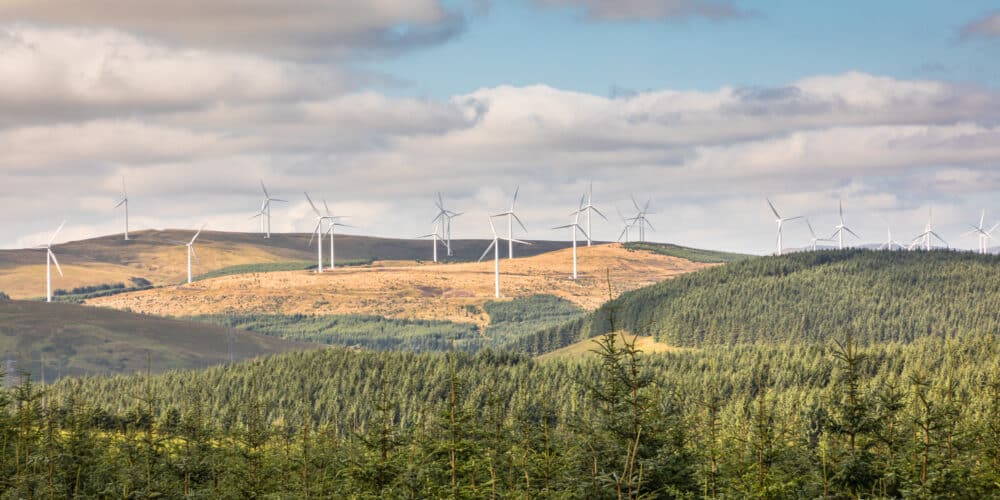
Introduction
It has been just over a year since Landmark Information Group signed up to the Pledge to Net Zero, showcasing our commitment to becoming carbon neutral. In our sector, we want to be leading the way. Not only is it the right thing to do as we face a climate crisis, but we are now seeing that it’s equally important for our clients too as they work towards net zero.
As part of our commitment, we have formed an internal Net Zero Taskforce Team to discuss and implement various strategies to cut our greenhouse gas emissions in line with the 1.5°C climate change scenario, as recommended by Pledge to Net Zero and Science Based Targets Initiative (SBTi).
The foundation of an efficient climate action strategy is to track and measure carbon emissions with accuracy. This can be broken down into scope 1, scope 2, and scope 3 emissions. In this article, we will be discussing strategies for waste reporting and reduction. This relates to an upstream scope 3 emission, as the treatment of waste by appropriate waste management services is purchased by the reporting company who are not directly in control of this source of emissions.
Reporting emissions from waste
We have always recycled the waste we produce, however since starting the process of recording our emissions, we noticed that some offices are able to accurately measure each waste type, whilst others are being supplied with a generalised certificate based on all the waste we recycled-not by waste type.
This year, the Brighton office is piloting a new waste management programme which incorporates weight measurements of separate collections of general, plastic, cardboard and glass. This is done using a combination of a luggage hanging scale for weighing bags of plastic and cardboard waste and a traditional stand-on weight scale for weighing heavy items such as glass collections. Measurements are taken prior to the collection by a waste management service. The information of how much waste the office produces monthly is then recorded, and using a greenhouse gas emission factor, outputs precise measurements of waste emissions within the scope 3 for the office. Once emissions have been established at a given period, strategies can be implemented to target consumption and reduce waste generation.
The importance of accurate measurements
There are a number of ways we can measure the emissions of waste generated in the office and each varies in accuracy.
The following measurements include:
- Supplier-specific method. This involves collecting waste-specific scope 1 and scope 2 emissions data directly from waste treatment companies.
- Waste-type specific method. This involves using emission factors for specific waste types and waste treatment methods.
- Average-data method. This involves estimating emissions based on total waste going to each disposal method (e.g.landfill) and average emission factors for each disposal method.
In some instances, we have had to use the average data method, but we are now looking to use the waste type-specific method so we can differentiate the emissions from different waste streams.
Why reduce?
The waste hierarchy, set out in Article 4 of the revised Waste Framework (Directive 2008/98/EC), gives the top priority to preventing waste in the first place. When waste is created, it gives priority to preparing it for reuse, then recycling, then recovery, and last of all disposal (e.g. landfill). Using this model then, the most effective strategies to reduce greenhouse gas emissions should incorporate reducing the amount of waste an office generates.
At Landmark we have implemented the following strategies to reduce the amount of waste the office produces:
- Saving paper usage by cutting down the amount of printing – printing documents only if absolutely necessary, using both sides where possible. For any scrap paper generated, keeping and reusing scrap paper for note taking if required.
- Buying tea and coffee and other non-perishables in bulk in large containers – this reduces the amount of packaging purchased and therefore required to be recycled.
- The replacement of paper towels in the kitchen with cloth tea-towels to deal with drink spillages. These can then be easily washed and reused, ready for the next working day.
- The transition from full-time office staff to a working from home hybrid – when employees work from home on set days, the amount of waste produced is less than with a full team working in the office.
- Appointing a waste and recycling leader in the office – the appointment of a reliable and interested representative helps ensure that recycling is separated, avoids recyclable waste going to landfills, and helps initiate new strategies to further improve office waste management.
Conclusion
Reporting and reducing the amount of waste produced at the office is just one of many strategies businesses can implement toward their climate action strategy. The aim of the pilot of the new waste management programme in Brighton is to make this a standard for all of our UK offices with Landmark Information Group, and more widely encourage positive change and action for more businesses to follow suit.
This Article was written by Matt Wagstaff, Environmental Consultant
